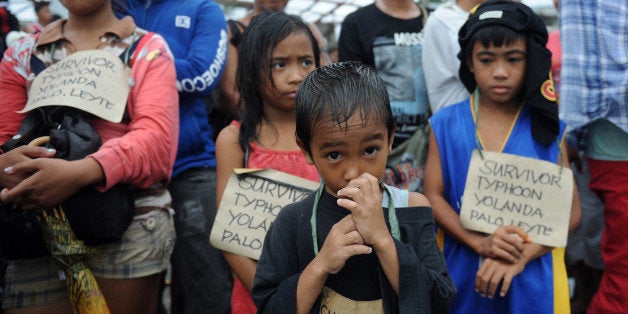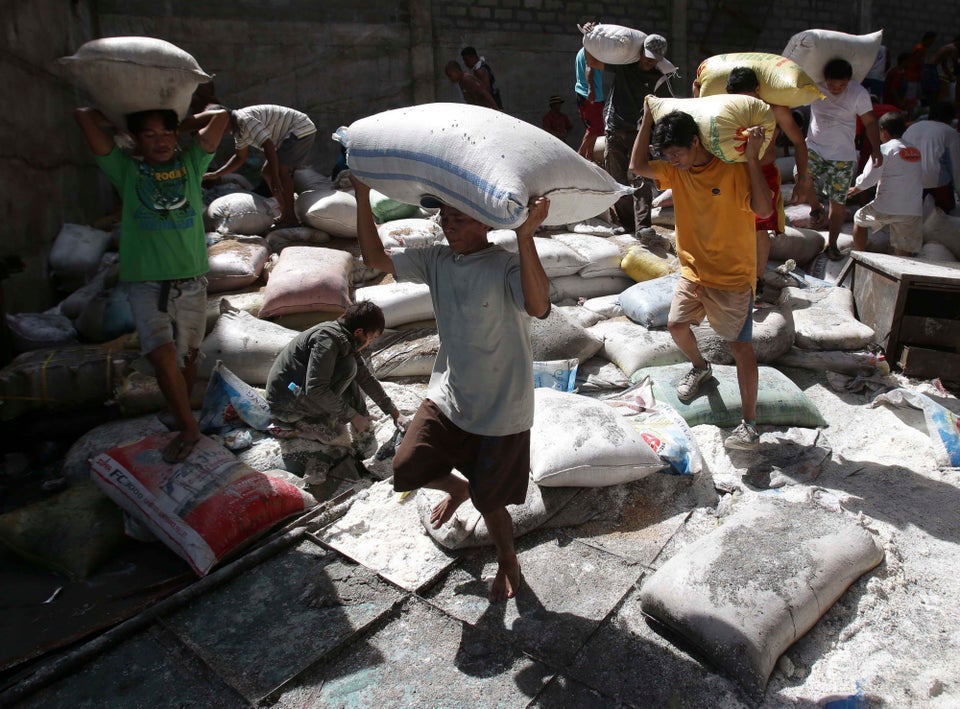
With an estimated 10,000 people feared dead, and aid organizations struggling to deliver life-saving supplies to Typhoon Haiyan survivors, it’s no wonder that donors are eager to pitch in.
But they’re also exercising caution –- and for good reason.
Just last year, a number of relief organizations, including the American Red Cross, came under fire for their slow response and questionable allocation of funds after Superstorm Sandy hit.
Even three years after a 7.0 earthquake rocked Haiti, authorities said “most everything went wrong” with regard to aid. And while Hurricane Katrina devastated New Orleans, FEMA notoriously wouldn’t allow aid from charities and businesses to flow in.
But as nonprofits are working to mobilize and reach struggling survivors, UNICEF, in a decidedly unconventional move, decided to host an Ask Me Anything segment on Reddit to answer any questions concerned donors have.
The organization, which focuses primarily on helping vulnerable children, is working to bring water, sanitation and hygiene supplies to victims and is appealing for more than $34 million in aid, according to a press release.
Here are a few pressing questions Reddit users and donors posed to Ted Chaiban, director of emergency programs at UNICEF.
bumblebeesbummy: Could you tell me how much, say, $50 would translate to in terms of different kinds of aid that UNICEF will provide, for how many people and how long etc, so I can decide how much I would like to donate?
UNICEF You can vaccinate a child for a dollar, an education kit for 80 students will cost 200 dollars. [And] 10,000 water purification tablets cost 66 dollars and that cleans 50,000 liters of water.
ckellingc: What percent of all money donated goes directly to relief efforts? What's the usual breakdown of funds (x percent to food, y percent to medicine)?
UNICEF: About 85% of the funds go directly to the relief effort. UNICEF'S focus is on children. We are dealing with the most immediate life saving needs at this stage. The first priorities are water and sanitation, shelter, and health. In addition, we are concerned about children being separated from their families. So we need to work with partners to identify separated children, making sure they are in a safe space and trace their families.
brownboy13: How often do your relief efforts hit bureaucratic roadblocks? Which are the most irritating to have to handle?
UNICEF: The biggest obstacle right now, is access. The difficulties of reaching the population because of damaged infrastructure is one we need to overcome. We have gotten some portable latrines on the ground, and therapeutic foods, along with shelter and hygiene and sanitation kits. But more is needed. Supplies are currently being air lifted to nearby Cebu airport and being trucked across Leyte to Tacloban. This and security are the main and immediate concerns. We should also recognize that the Philippino authorities have been very helpful in allowing staff and supplies in with minimal beauracratic hurdles. So the concern is really one of airport congestion, local infrastructure capacity, etc.
Olclops: Once you get past the short term emergency, basic life-sustaining relief efforts, what does the transition to recovery look like? After water, food, sanitation are improved, what becomes the big challenge next?
UNICEF: This is an important question to start addressing from the very beginning. What is important is to work on the resumption of basic social services so there is a sense of normalcy and children can access these services. Amongst the most importance, is the resumption of education so that children are in a familiar environment and begin the healing process. In addition, children will need pyschosocial support, to deal with the stress that they have been under, including the possible loss of lives in their families and loved ones. We also need to start looking at early recovery and reconstruction activities from the get go, starting with water systems but also looking at health and education infrastructure.
Oswaldi: Is it worse or better than CNN et al are saying? Blunt and open-ended question, but one which I guess must be asked.
UNICEF: It is very bad. The description from colleagues on the ground is this is very similar to what happened with the Indian Ocean tsunami, where at the epicenter of the typhoon, notably Tacloban, there is large scale desctruction, debris is skewed all over, and access is made very difficult. In terms of responding to the needs, basic things like having fuel to move supplies is very difficult. And there is a large number of people who have been severely affected and displaced by this crisis. So this is for real. And, we need to make this a priority.
calculusknight: How much can private donations do to alleviate problems in comparison to huge relief funds by nations or organizations such as the US or the EU?
UNICEF: Every little bit counts. In the case of the tsunami response and the horn of Africa drought response, private donations were key to supporting the response and made up 30 percent of all funds received.
flippityfloppityfloo: What more can be done to stomp out fraudulent aid relief funds or "organizations" who seek to profit from horrific tragedy?
UNICEF: There are a large number of credible organizations on the ground, including organizations whose name you'd recognize, such as Medecins Sans Frontieres, Save the Children, local Red Cross, as well as credible UN agencies such as World Food Programme, WHO, and of course UNICEF. A number of media outlets have supported links to credible organizations and this is one way to be able to contribute if you'd like to do so.
Are you sufficiently inspired to give? If so, you can learn even more about UNICEF's on-the-ground work and how you can help here.
